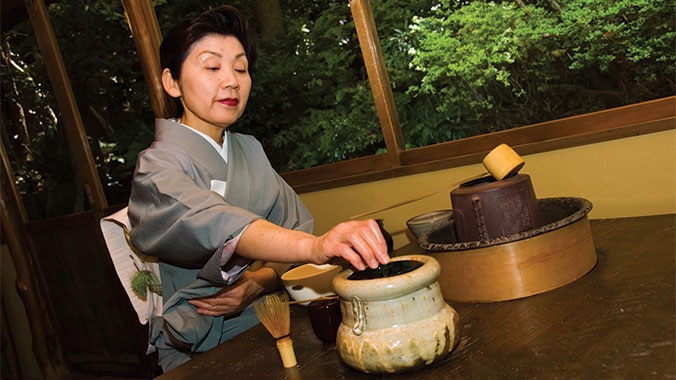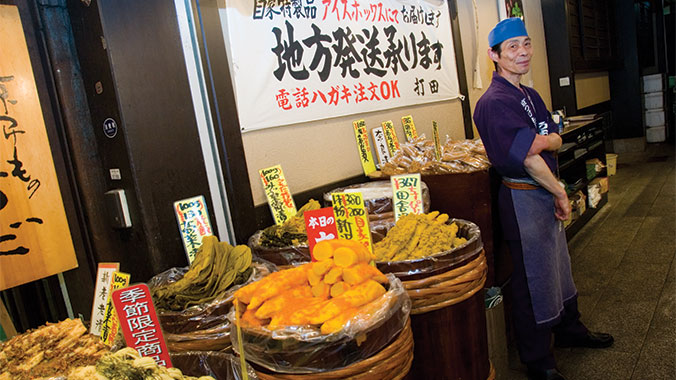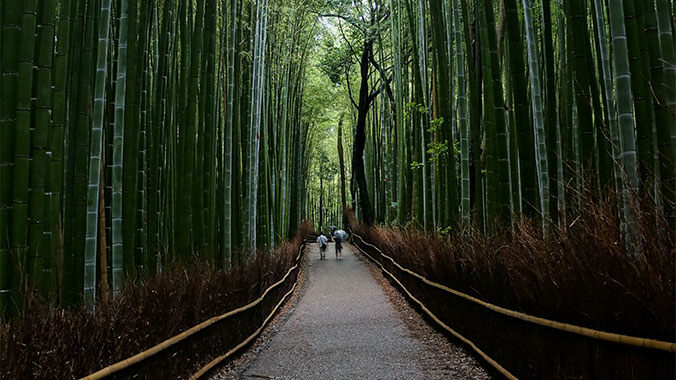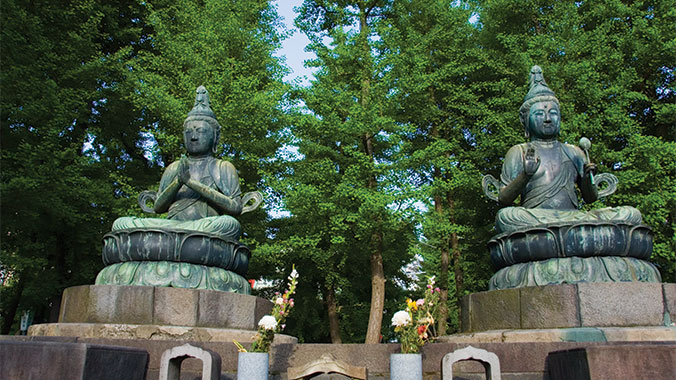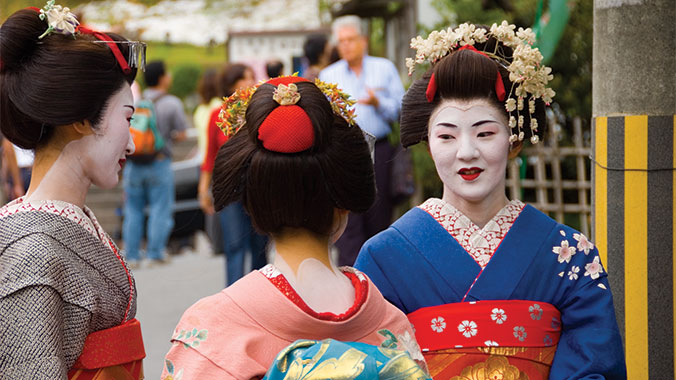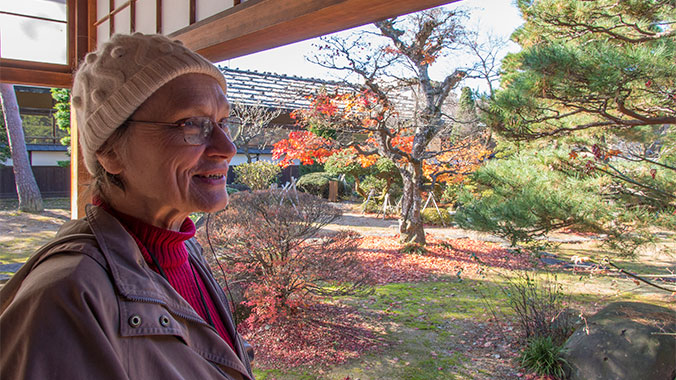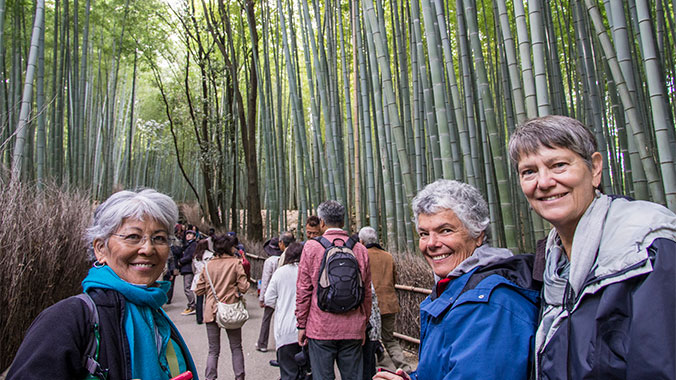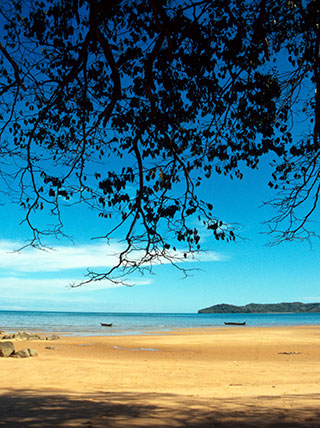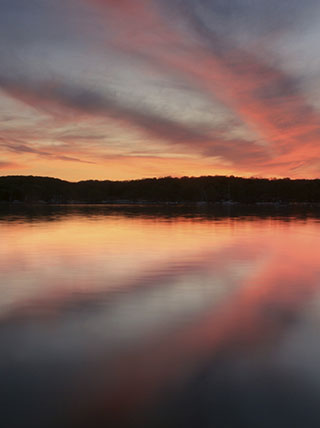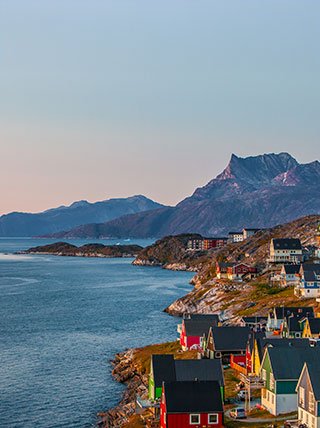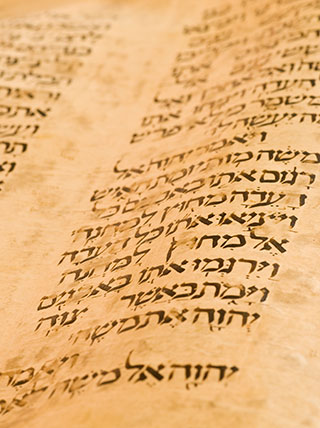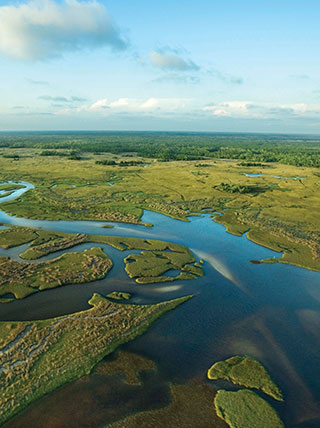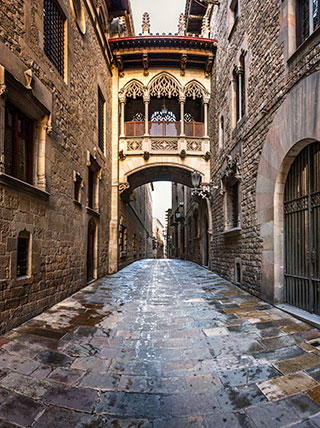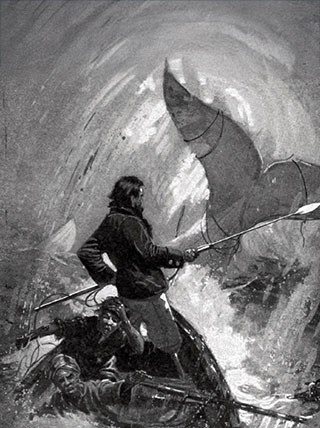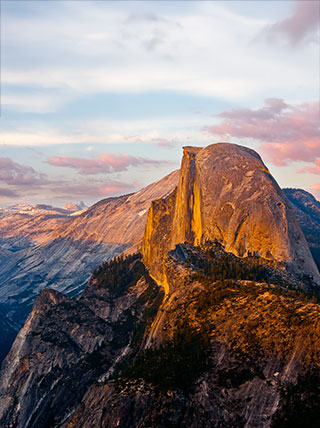Japan
The Best of Japan: A Contrast in Tradition and Innovation
Program No. 23294RJ
Venture south from Tokyo to Hiroshima for an in-depth dive into traditional and modern Japan and learn the local history that shaped its modern society.
Enroll with Confidence
We want your Road Scholar learning adventure to be something to look forward to—not worry about. Learn more
Protecting the Environment
We offset a portion of the emissions created by your travel. Learn more
Itinerary
While we make every effort to ensure the accuracy of our published materials, programs are typically advertised more than a year prior to their start date.
Read More.
While we make every effort to ensure the accuracy of our published materials, programs are typically advertised more than a year prior to their start date. As a result, some program activities, schedules, accommodations, personnel, and other logistics occasionally change due to local conditions or circumstances. Should a major change occur, we will make every effort to alert you. For less significant changes, we will update you during orientation. Thank you for your understanding.
Duration
14 days
13 nights
What's Included
23 meals (
12B, 6L, 5D
)
3 expert-led lectures
19 expert-led field trips
3 hands-on experiences
1 performance
An experienced Group Leader
12 nights of accommodations
Taxes and customary gratuity
Road Scholar Assurance Plan
Day
1
In Transit to Program
Location:
In Flight
Day
2
Arrive Tokyo, Check-in
Location:
Tokyo
Stay:
Shiba Park Hotel
Activity Note
Check in from 4:00 p.m.
Afternoon:
After checking in to the hotel and getting your room, take some time to freshen up and relax. Your Group Leader will be at the hotel from the previous night and will try to greet you when you arrive.
Dinner:
As many flights from the US are likely to arrive this evening, dinner is at own arrangements tonight.
Evening:
Settle in and get a good night’s rest for the day ahead. In contrast to our traditional programs, this program offers extensive time for personal independent exploration and a number of meals on your own to enjoy the cuisine of your choice. The Group Leader will be happy to offer suggestions. Periods in the schedule designated as “Free time” and “At leisure” offer opportunities to do what you like and make your experience even more meaningful and memorable according to your personal preferences. Program activities, schedules, personnel, and indicated distances or times may change due to local circumstances/conditions. In the event of changes, we will alert you as quickly as possible. Thank you for your understanding. Tokyo is a vast city. To make the most of our experience, we will do as locals and use Tokyo’s large, complex but hugely efficient public transit system. You will be provided with travel cards that will cover all of the included program transportation. These can also be used for free time in Tokyo and other cities as well.
Day
3
Asakusa, Understanding Japan, Sensoji Temple
Location:
Tokyo
Meals:
B,L,D
Stay:
Shiba Park Hotel
Activity Note
Use of public transportation system; stairs, corridors, escalators. Getting in/out of rickshaws, on/off a motorcoach. Walking up to 5 miles throughout the day; standing at field trip sites. Shoes must be removed multiple times today. Sitting on low chairs in tatami room.
Breakfast:
In the hotel, the breakfast buffet offers a diverse selection of traditional Japanese and Western breakfast items.
Morning:
We begin our first full day on the program with our welcome meeting and orientation. The Group Leader will greet everyone and lead introductions. We will review the up-to-date program schedule, discuss roles and responsibilities, logistics, safety guidelines, emergency procedures, and answer questions. We then make first use of our travel passes and travel to the Asakusa area. Here our group will split into two halves. One half of the group will have a demonstration and lesson on ikebana, commonly referred to as Japanese flower arranging. Far more than that, Ikebana illustrates how Shinto beliefs converged with the introduction of Buddhism from China, forming the basis of the Japanese psyche. While half of the group is doing Ikebana, the other half will travel on rickshaws through Asakusa. Asakusa is a part of Tokyo where residents take pride in being “edokko” — people of Edo, the pre-modern name for Japan. At the end of the first session, the two halves of our group will swap over and take part in the alternate activity. At the end of our Ikebana/rickshaw sessions, we walk through the bustling Nakamise Dori (in the Japanese language "dori" roughly equates to "street") to Sensoji, the city’s oldest and busiest temple. At Sensoji Temple, we we learn something of the importance of Buddhism in the daily lives of Japanese people.
Lunch:
At a restaurant near Sensoji we have a shared platter lunch. Tap water in Japan is safe to drink. All restaurants serve chilled tap water and hot tea. Other beverages are available for purchase.
Afternoon:
After lunch, we return to our hotel via public transport. The remainder of the afternoon is free, allowing you to explore Tokyo at your leisure.
Dinner:
We will meet in the lobby and take a brief subway ride to a quality Japanese restaurant located in Tokyo's prestigious Shiodome district. The restaurant offers diners authentic and original Japanese dishes made with carefully-selected seasonal ingredients and a range of beverages to accompany the food.
Evening:
Returning to the hotel, the remainder of the evening is at leisure.
Day
4
Tokyo National Museum, Free Time
Location:
Tokyo
Meals:
B
Stay:
Shiba Park Hotel
Activity Note
Use of public transportation system; stairs, corridors, escalators.
Breakfast:
Hotel buffet.
Morning:
We will board a motorcoach and ride to the Tokyo National Museum. We have time to explore the museum, considered the oldest museum and largest art facility in Japan. The Museum is one of the four National Institutes for Cultural Heritage in Japan. We transfer to Odaiba — Daiba for short — the artificial island in Tokyo Bay that is the home of science, technology, and leisure. “Daiba” means a platform site, in this case for defensive cannons. Several daibas were constructed here beginning in 1853. Massive landfills in the 20th century eventually gave rise to arguably Tokyo’s most futuristic residential, business, and entertainment district. The remainder of the day is free, allowing you to explore Tokyo at your leisure.
Lunch:
This meal has been excluded from the program cost and is on your own to enjoy what you like.
Afternoon:
Free Time. Take this opportunity for personal independent exploration in Toyko to see and do what interests you most. Your Group Leader will be happy to offer suggestions.
Dinner:
On your own to explore local fare and enjoy what you like.
Evening:
At leisure.
Day
5
Meiji Shrine, Ultra-Modern Harajuku & Omotesando, Free Time
Location:
Tokyo
Meals:
B
Stay:
Shiba Park Hotel
Activity Note
Use of public transportation system; stairs, corridors, escalators.
Breakfast:
Hotel buffet.
Morning:
We will take the subway to the Meiji Shrine. Dedicated to the late 19th-century emperor Meiji who opened Japan to the West, the shrine is situated in a serene forest oasis. The 40-foot-high torii gate at the entrance is made of 1,500-year-old cypress. From a local expert, we will learn about the history of the shrine and some basics of Shinto – a belief system that is unique to Japan. Incidentally, you cannot become Shinto, you must be Japanese and born in Japan. Next, we will step from tradition and into the ultra-modern. Upon leaving the shrine we cross over to Takeshita Dori. This narrow, bustling pedestrian street is home to much that is trendy and a little odd in Japan. It is a fascinating and vibrant street to wander taking in the sights, both commercial and human. We carry on to stroll down Omotesando, the tree-lined “Champs Elysees” of Tokyo, just steps outside of Meiji Shrine. This neighborhood is the location for haute couture brands. Even more impressive than fashion brand names are the stunning, architecturally ambitious buildings by great modern architects who have been the recipients of more Pritzker Prizes than anywhere else. You are welcome to return to the hotel via public transportation with the Group Leader or explore independently.
Lunch:
On your own to explore local fare and enjoy what you like.
Afternoon:
Free time. This time has been set aside for your personal independent exploration to see and do what interests you most. The Group Leader will be happy to offer suggestions.
Dinner:
On your own to explore local fare and enjoy what you like.
Evening:
At leisure. Prepare for check-out and departure in the morning.
Day
6
Shinkansen (Bullet Train), Ise Shrine, Mie Prefecture
Location:
Ise-Shima
Meals:
B,L,D
Stay:
Grand Mercure Ise Shima Resort and Spa
Activity Note
Getting on/off shinkansen; the ride to Nagoya is approximately 1.5 hours. Getting on/off a motorcoach; the drive to Ise is about 50 miles (80 kilometres) approximately 2 hours; the drive to Shima is about approximately 1 hour. Walking approximately 1 mile, standing up to 2 hours; paved and unpaved ground. Shoes must be removed at entrance of rooms in Japanese Inns. Sitting on low chairs for dining; sleeping on Japanese futons on the floor.
Breakfast:
This morning your larger luggage item will be sent ahead to Kyoto. Please have your luggage down to reception by 7am. Plan to keep your smaller luggage with you for travel by train. Hotel buffet.
Morning:
After checking out of the hotel, we will take taxis to Tokyo Station and catch an early Shinkansen to Nagoya. Upon arrival at Nagoya Station, we meet our local expert, board a motorcoach, and drive from Nagoya to Mie Prefecture. En route, our expert provides an in-depth explanation of Shinto, which forms the basis for much of Japanese society, tradition, culture, and daily life through its respect for the interwoven relationships between humanity and nature, connecting to the mystery, power, and holiness of creation.
Lunch:
At a local restaurant, we will have a set meal of local specialties including Ise udon (udon noodles in soy-based sauce) and tekone sushi (marinated tuna served on sushi rice); tea and water included, other beverages available for purchase.
Afternoon:
We will walk with our local expert through the sacred forest to the Ise Grand Shrine — Ise Jingu — the most sacred Shinto shrine in Japan and ancestral shrine of its emperors. It consists of the outer Geku and the inner Naiku shrines, dedicated to the sun goddess Amaterasu Omikami, the supreme Shinto deity. First constructed in 4 BCE, the shrine is completely rebuilt every 20 years. There are more than 100 other structures in this extensive complex including smaller shrines dedicated to other Shinto spirits. We will explore daily life, traditional cultures, and Shinto practice that is still relevant today as it was a thousand years ago. Please note that we are not permitted to enter the sacred area of Ise Jingu itself. After walking through the sacred forest, we stroll down the small street of Okage Yokocho village, filled with reconstructed quaint traditional houses, shops, and street-side stalls, much as 19th-century pilgrims once did. Reboarding our motorcoach, we continue along the peninsula and stop for a short walk along the coast to view Meoto Iwa, the “Married Couple Rocks.” In Shinto belief, they symbolize the celebration of marriage and connected by a “shimenawa” — distinctive sacred ropes made of braided rice stalks. According to Shinto legend, the islands in the Japanese archipelago were born of this couple. Moving on, we will arrive in Shima and check in to our ryokan-style hotel, complete with tatami rooms. A "ryokan" is a traditional Japanese inn that is usually family-owned and operated. Once in your room, you can change into the provided “yukata” (casual kimono). This is traditionally worn throughout the hotel during a guest's stay.
Dinner:
In a private room in the hotel, we will have a traditional Japanese “kaiseki” — a multi-course dinner that is an expression of culinary expertise featuring seasonal, local specialties. Mie Prefecture, bordered by the sea, is renowned for seafood. The region was considered the “grocery store” of the emperor in Kyoto and is notable today for its many high-quality products.
Evening:
At leisure. You might like to use the onsen — the traditional, communal Japanese bath divided into male and female sections. Japanese culture is particular about manners, and bath etiquette is very important. Please note that tattoos are considered a cultural taboo and are not permitted to be displayed in Japanese baths.
Day
7
Traditional Life and Culture in Ise-Shima
Location:
Ise-Shima
Meals:
B,L,D
Stay:
Grand Mercure Ise Shima Resort and Spa
Activity Note
Walking up to 2 miles throughout the day.
Breakfast:
In the ryokan.
Morning:
With our local expert, we explore culture and daily life in the area. We begin by boarding our motorcoach and transferring to visit a traditional fish-smoking hut, where some of the country’s best bonito is dried and cured using the traditional methods. Bonito is an important ingredient in Japanese cooking. Here we will learn something of the concept of the taste sense of umami, and also how dashi is made.
Lunch:
At lunch we have a meal consisting of local produce.
Afternoon:
The process of creating cultured pearls originated in Mie Prefecture, where Kokichi Mikimoto was born and later established his Mikimoto factory. We visit a small, family-run cultured pearl farm to learn first-hand how the process works, and to try our hand at extracting a cultured pearl. We next learn about the practice, dating back more than 2,000 years, of "Ama” — women free-divers. As we drive and walk along coastal areas, we will keep an eye out for their activities. We will then share afternoon tea and stories with one of the Ama, who free-dive in the waters off of the coast to gather abalone, shellfish, sea cucumbers, octopus, and seaweed. We then transfer to the Visitor Center of Ise-Shima National Park, where we learn how this region’s natural resources are protected and used for sustainable businesses. We will take a short walk to the lookout allowing us stunning views of the area. Returning to the hotel, we will have some time to freshen up. There will be time to relax in the onsen for those who wish to.
Dinner:
We will have a simpler Japanese-style dinner at our accommodation this evening.
Evening:
At leisure. Prepare for check-out and departure in the morning.
Day
8
Transfer to Iga, Nara & Kyoto
Location:
Kyoto
Meals:
B
Stay:
DoubleTree by Hilton Kyoto Station
Activity Note
Getting on/off a motorcoach. This will be a full day of travel with stops en route. The drive to Iga is about 60 miles (100 kilometres), approximately 2 hours; from Iga to Nara is about 30 miles (50 kilometres), approximately 1 hour; from Nara to Kyoto about 30 miles (50 kilometres). Walking approximately 2 miles throughout the day.
Breakfast:
In the ryokan.
Morning:
We will check out of the hotel, board the motorcoach with our Group Leader and drive to Iga. There, we will visit the Ninja Museum of Igaryu. Not just the stuff of action movies, ninja were the secret spy network for shoguns. They employed martial arts, physical prowess, and secret disguises to carry out their missions and evade danger. Iga is the center of historical study of ninja. At the museum, we will learn about the weapons and history of the ninja, while meeting actual practitioners. Even today, their skill is passed on from parent to child. We will enjoy an entertaining performance of their skills.
Lunch:
On your own to have what you like at a roadside food court.
Afternoon:
We will continue to Nara and visit Todaiji Temple. The temple was constructed in 752 CE as the head temple of all provincial Buddhist temples of Japan and grew so powerful that the capital was moved from Nara to Nagaoka in 784 in order to lower the temple's influence on government affairs. Todaiji's main hall, the Daibutsuden (Big Buddha Hall) is the world's largest wooden building, despite the fact that the present reconstruction of 1692 is only two-thirds of the original temple hall's size. The massive building houses one of Japan's largest bronze statues of Buddha (Daibutsu). The seated Buddha is more than 49 feet high. The temple is situated in Nara’s Deer Park. Deer were traditionally perceived to be the messengers of the gods, so were not hunted and developed a tame relationship with humans. The deer roam freely and enthusiastically seek snacks from visitors who can purchase “deer crackers” from local vendors. Moving on to Kyoto, we will check in at our hotel where our luggage awaits us.
Dinner:
On your own to have what you like in the area with a multitude of choices.
Evening:
At leisure.
Day
9
Ginkakuji Temple, Zen Garden, Tea Ceremony
Location:
Kyoto
Meals:
B,D
Stay:
DoubleTree by Hilton Kyoto Station
Activity Note
Getting on/off a motorcoach. Walking up to 5 miles throughout the day.
Breakfast:
Hotel buffet.
Morning:
We will be joined by a local expert, board a motorcoach, and ride to the north-west side of Kyoto into the Higashiyama neighborhood. There, we will set out on a walking field trip through the manicured Zen garden of Ginkakuji (silver pavilion) Temple. In temple gardens, the core beliefs of Shinto and Buddhism are modeled in three dimensions. We will follow the path uphill to take in the views over the city. We will then walk along the river path, known as the Philosophers’ Path, that was used for contemplation, through local neighborhoods. We then reboard our motorcoach and transfer to a private temple. Here we will participate in a traditional tea ceremony. It is said that to truly understand Japanese culture, we must first understand the Japanese tea ceremony. The ceremony, a combination of nourishment and a meditation on imperfection, is designed to lead its participants towards a communion of humanity and nature — a tangible illustration of traditional Japanese culture. The motorcoach will return to the hotel after our field trip.
Lunch:
On your own to enjoy what you like.
Afternoon:
After a free afternoon, we come together at our hotel to transfer to dinner in one of Kyoto's lively entertainment districts.
Dinner:
At a restaurant near Gion we will have a traditional Kaiseki dinner, and, as a special highlight, enjoy entertainment by a maiko.
Evening:
Returning to the hotel, the remainder of the evening is at leisure.
Day
10
Kinkakuji Temple, Arashiyama, Bamboo Grove, Tenryuji Temple
Location:
Kyoto
Meals:
B,L
Stay:
DoubleTree by Hilton Kyoto Station
Activity Note
Getting on/off a motorcoach. Walking up to 5 miles throughout the day.
Breakfast:
Hotel buffet.
Morning:
With our local expert, we will set out early this morning, board our motorcoach, and ride to the exquisite Kinkakuji Temple (golden pavilion). The picturesque reflection of Kinkakuji on its neighboring pond makes it one of the most appealing landscapes in Kyoto. After soaking up the stunning scenery, we then ride to Arashiyama on the outskirts of Kyoto. We will walk through the rustling Bamboo Grove to the garden of Tenryuji Temple, a UNESCO-designated World Heritage Site. Tenryuji is the head temple of its own school within the Rinzai Zen sect of Japanese Buddhism. Although the temple buildings have been rebuilt multiple times, Tenryuji's garden survived the centuries in its original form. The artfully landscaped garden features a central pond surrounded by rocks, pine trees, and the forested Arashiyama mountains.
Lunch:
At Tenryuji temple, we will have a vegan Buddhist meal.
Afternoon:
Returning to central Kyoto, the remainder of the afternoon is free for your personal independent exploration.
Dinner:
On your own to explore local fare and enjoy what you like.
Evening:
At leisure. Prepare for check-out and departure in the morning.
Day
11
Hiroshima by Shinkansen, Peace Memorial Park
Location:
Hiroshima
Meals:
B,L
Stay:
Hotel Granvia Hiroshima
Activity Note
Getting on/off bullet train; the ride from Kyoto to Hiroshima is approximately 2 hours. Walking approximately 5 miles throughout the day; walking and standing about 1.5 hours at Peace Museum and Peace Park.
Breakfast:
This morning your larger luggage item will be sent ahead to Osaka. Please have your luggage down to reception by 8am. Hotel buffet.
Morning:
Checking out of the hotel, we will walk to the train station and take the bullet train from Kyoto to Hiroshima. Upon arrival at the station in Hiroshima, we meet our local expert and transfer by motorcoach to a local restaurant for lunch.
Lunch:
At one of Hiroshima’s iconic okonomiyaki restaurants, our lunch will be prepared in front of us on special steel griddles. Okonomiyaki was originally a snack food but after the A-bomb, when food was scarce, survivors used loose pieces of sheet metal as makeshift griddles to cook whatever scraps they could find such as cabbage, vegetables and egg for protein. In 1945, the American occupation brought boatloads of surplus wheat to a starving nation, beginning the culture of ramen, udon, and adding a thin crepe to create the now signature dish, okonomiyaki.
Afternoon:
After lunch we transfer to the Peace Memorial Park. We will first go to the Atomic Bomb Dome near the epicenter of the explosion site, whose ruins have been retained as a tangible reminder of the destruction. We will walk through the Peace Park, passing the memorial statues, to the Museum. The Hiroshima Peace Memorial Museum is in the forefront of the global movement towards nuclear disarmament and lasting world peace. At the Peace Memorial Museum, we will hear a presentation in English by a local survivor of the atomic bomb, then explore the museum, guided by the local docents. We will have time for some individual exploration of this thought-provoking institution. We then transfer to our hotel and check in. The remainder of the afternoon and evening is free.
Dinner:
On your own to explore local fare and enjoy what you like.
Evening:
At leisure.
Day
12
Miyajima Island, Itsukushima Shrine, Free Time
Location:
Hiroshima
Meals:
B
Stay:
Hotel Granvia Hiroshima
Activity Note
Getting on/off a train; riding about 1/2 hour to/from Miyajima. Getting on/off a large car ferry, with steps from the deck up to the enclosed seating area, and steps to an additional upper, outdoor, covered seating area. Walking approximately 5 miles throughout the day.
Breakfast:
Hotel buffet.
Morning:
We will meet our local guide, transfer to the train station and board the train to Miyajima-guchi. Disembarking the local train, we will walk two blocks to the ferry wharf for the 10-minute ferry ride to Miyajima, known as the island of the gods. As the ferry approaches the island, on the right-hand side we will have a water view of the famous torii gates of Itsukushima Shrine — another UNESCO-designated World Heritage Site — that appear to float on water at high tide. Disembarking the ferry, we will begin a walk with a local expert through the small village and on to Itsukushima Shrine. From the Shrine, you may wish to continue on to Daisho-in, the main Buddhist temple on the island. The remainder of our time at Miyajima is free time allowing you to explore the island at your leisure.
Lunch:
On your own. The main street of Miyajima is lined with food stalls, restaurants, and cafés, even a micro-brewery, with many choices for a snack or a sit down meal.
Afternoon:
Free time. You might like to take the cable-car up the mountain for more scenery, hike, or stroll the beach by the torii gates We will rendezvous with our Group Leader at an appointed time and place, then return to Hiroshima via ferry and train.
Dinner:
On your own to explore local fare and enjoy what you like.
Evening:
At leisure. Prepare for check-out and departure in the morning.
Day
13
Himeji Castle, Osaka
Location:
Osaka
Meals:
B,L,D
Stay:
Osaka Excel Hotel Tokyu
Activity Note
Getting on/off shinkansen; the ride to Himeji is approximately 1 hour. Getting on/off a motorcoach; driving about 60 miles (100 kilometres), approximately 2 hours. Walking approximately 2 miles and standing at Himeji Castle approximately 1.5 hours; steep stairways; removing shoes and walking in our socks.
Breakfast:
Hotel buffet.
Morning:
We will leave Hiroshima by shinkansen with our small luggage. At Himeji Station, we will board a motorcoach and ride to Himeji Castle. Regarded as the finest surviving example of prototypical Japanese castle architecture, it comprises a network of 83 buildings with advanced defensive systems from the feudal period. The castle was one of the first UNESCO-designated World Heritage Sites in Japan for its stone and wood construction. At the castle, those who prefer not to climb the steep stairs may remain in the gardens with seating areas that have beautiful views. We will then walk about 300 yards to the adjacent Kokoen Gardens and stroll through the charming landscape, divided into nine walled gardens in designs from the Edo Period.
Lunch:
At a local restaurant, we will have a typical Japanese set-menu lunch.
Afternoon:
We will board our motorcoach, drive to Osaka, check in to our hotel and reclaim our large suitcases. There will be some time to freshen up and relax before dinner.
Dinner:
We will walk to a nearby restaurant for a typical contemporary Japanese dinner in a private room. Share favorite experiences with new Road Scholar friends during our farewell dinner.
Evening:
Returning to the hotel, prepare for check-out and departure in the morning.
Day
14
Free Time, Program Concludes
Location:
In Flight
Meals:
B
Activity Note
Hotel check-out 11:00 a.m.
Breakfast:
Hotel buffet.
Morning:
Free time. Go out for some independent exploration or just relax. Luggage may be stored at the reception desk after hotel check-out time.
Lunch:
On your own. Osaka is a food lover’s paradise. The streets are full of restaurants large and small, and food stalls with local specialties.
Afternoon:
Those who have booked their flights home through Road Scholar will meet back at the hotel before we have a coach transfer to Osaka Airport (formally known as Kansai International Airport) at 12:30 p.m. This concludes our program. If you are returning home, safe travels. If you are staying on independently, have a wonderful time. If you are transferring to another Road Scholar program, detailed instructions are included in your Information Packet for that program. We hope you enjoy Road Scholar learning adventures and look forward to having you on rewarding programs in the future. Don’t forget to join our Facebook page and follow us on Instagram. Best wishes for all your journeys!
Please select a day to update the map
Map details are not available for this location.


